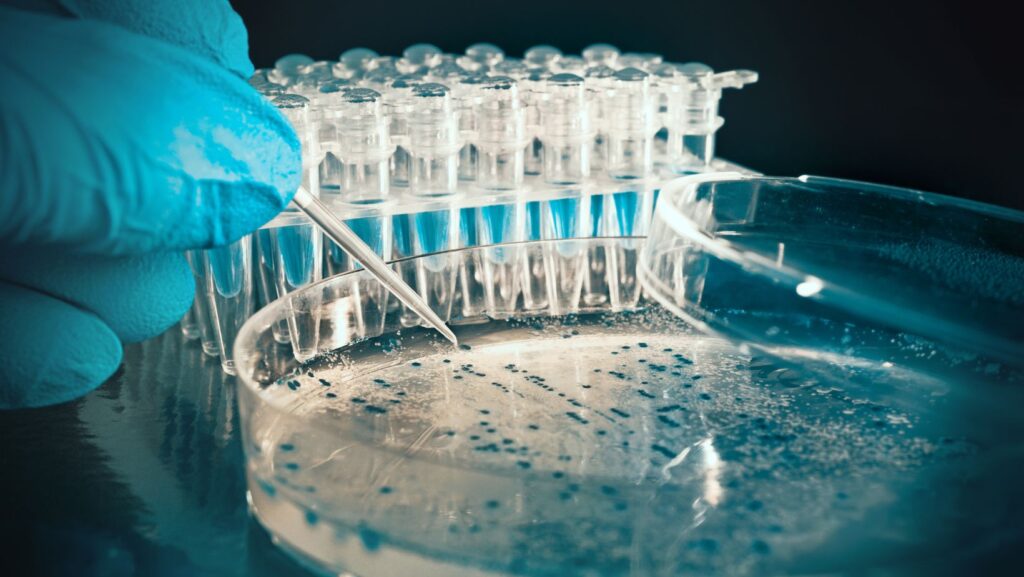
In the rapidly evolving biotech world, plasma kallikrein-based proteins are emerging as a promising frontier. These proteins, crucial in regulating inflammation and blood pressure, are attracting significant attention for their potential therapeutic applications. As researchers continue to uncover their multifaceted roles, new markets are opening up, offering opportunities for innovation and investment.
This article delves into the burgeoning biotech markets focused on plasma kallikrein-based proteins. It explores the scientific advancements driving interest in these proteins and highlights their potential for treating a range of health conditions. Readers will gain insights into the latest market trends, investment opportunities, and the challenges in harnessing this exciting biotech niche.
ACROBiosystems’ Role in Plasma Kallikrein Research and Therapeutics
ACROBiosystems is a key contributor to plasma kallikrein research and therapeutic development. They offer high-quality recombinant proteins, including active human plasma kallikrein with His tags, essential for various research applications. These proteins are produced in human 293 cells (HEK293) and undergo rigorous quality control to ensure purity and activity. By providing these critical reagents, ACROBiosystems supports the advancement of plasma kallikrein-based therapeutics, facilitating research into conditions like hereditary angioedema and other inflammatory disorders (ACROBiosystems, n.d.).
Overview of Biotech Investment Landscape
The biotech investment world is buzzing with opportunities, especially in plasma kallikrein-based proteins. Investors eye this sector due to its promising CAGR of 9.6%, which will lead to an estimated USD 7.96 billion by 2032 (Polaris et al., 2024). Strategic partnerships and innovative research initiatives attract funding, amplifying growth potential. Increasing healthcare expenditures also fuel investments, making advanced therapies more accessible worldwide.
Understanding Plasma Kallikrein
Plasma kallikrein is significant in the biotech industry because of its therapeutic potential. It’s crucial for physiological functions like blood pressure regulation, inflammation, and coagulation.
What is Plasma Kallikrein?
Plasma kallikrein, also known as KLKB1, is a serine protease essential in the kallikrein-kinin system. It originates from human plasma and affects various body processes. This protein is vital for maintaining physiological balance and managing inflammation and blood coagulation pathologies.
Its activity influences conditions such as hypertension and inflammatory disorders, highlighting its therapeutic importance (Feener et al., 2013).
Clinical Relevance
Plasma kallikrein’s connection to hereditary angioedema (HAE) demonstrates its clinical significance. HAE, a rare genetic condition, leads to severe edema due to dysfunction in the C1-inhibitor (C1-INH). Unchecked plasma kallikrein activation increases bradykinin production, causing these edema episodes. Treatments focusing on kallikrein inhibitors are pivotal in preventing these attacks. This targeted approach provides significant relief for those affected, illustrating the direct impact of understanding and managing plasma kallikrein activity for clinical advancements (Bork et al., 2020).
Current Therapeutics Involving Plasma Kallikrein
Plasma kallikrein, a key serine protease, significantly impacts the kallikrein-kinin system, affecting coagulation and inflammation. Proper therapeutic interventions can mitigate its effects.
Existing Treatments
Hereditary Angioedema (HAE) therapies utilize plasma protease C1 inhibitors, such as Berinert S.C. Injection 2000, to regulate the complement system and reduce plasma kallikrein activation. These treatments are pivotal in managing conditions related to coagulation and fibrinolysis by targeting factor XII activation and bradykinin release (CSL Behring, 2021).
Emerging Therapies
Emerging therapies focus on plasma kallikrein pathways to enhance control over inflammatory and coagulatory responses. Advanced biologics and small molecules are under investigation, offering improved efficacy and specificity. These innovations demonstrate significant potential to expand treatment options within the biotech field (Banerji et al., 2021).
Market Opportunities
Plasma kallikrein-based proteins are increasingly capturing attention in the biotech sector. Their potential to treat various conditions boosts market growth.
Growing Demand for Targeted Therapies
The push for targeted therapies drives demand for plasma kallikrein inhibitors, especially for rare conditions like hereditary angioedema (HAE).
These inhibitors effectively manage HAE by controlling swelling episodes. Other conditions, including diabetic macular edema and inflammatory diseases, present additional market opportunities. Controlling inflammation through plasma kallikrein modulation enhances therapeutic strategies for these patients.
Investment Potential
Investment in plasma kallikrein therapies appears promising. The market is projected to reach USD 7.96 billion by 2032, growing at a CAGR of 9.6% (Polaris et al., 2024). Innovative research and strategic partnerships are vital in attracting investments. Increased healthcare spending worldwide supports access to advanced therapies, making the market amenable to growth.
Future Directions
Plasma kallikrein holds promise for broadening therapeutic applications through innovative research avenues. Insights into this protein’s function can advance health care.
Innovations in Protein Therapeutics
Researchers explore plasma kallikrein’s role in targeted protein therapies. It impacts the kallikrein-kinin system, influencing blood pressure and inflammation. Advanced biologics could enhance treatment specificity and efficacy. Such innovations may significantly expand options for personalized medicine, particularly for conditions like hereditary angioedema.
Potential Research Areas
Metabolic Disorders
Plasma kallikrein is a key player in metabolic processes. Its action in the kallikrein-kinin system offers targets for managing hypertension and cardiovascular health. Therapies could alleviate related disorders by modulating blood pressure through bradykinin release. This potential makes the protein a focus of metabolic research.
Cancer
Explorations into plasma kallikrein may reveal cancer treatment pathways. Its involvement in signaling pathways suggests roles in tumor progression. Interest is growing in developing inhibitors to reduce cancer spread. Plasma kallikrein’s actions offer intriguing targets in oncology, driving efforts to design precise interventions.
Conclusion
Plasma kallikrein plays a central role in biotechnology, offering substantial therapeutic opportunities. The demand for targeted treatments such as hereditary angioedema management positions this field for expansion, projected to reach USD 7.96 billion by 2032. As healthcare spending increases, plasma kallikrein’s relevance and potential applications continue to grow.













